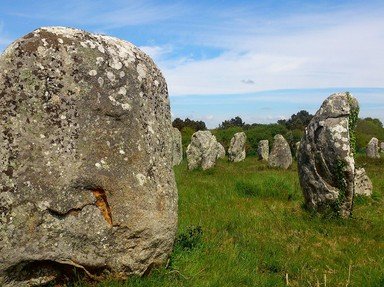Quiz Answer Key and Fun Facts
1. From 1929-1937 remains of individuals that were eventually called Peking Man were found at a site called Zhoukoudian near Beijing. What feature of the site made it a gathering place for early humans?
2. Although initially discovered by another archaeologist, a Canadian scientist became involved in the project at Zhoukoudian in 1922. What was his name?
3. The new discovery that became known as "Peking Man" was originally classified as "Sinanthropus pekinensis" based on the discovery of just one piece of fossil evidence. Which of the following had been found?
4. Over time there was enough fossil evidence available to enable scientists to correctly classify Peking Man. Into which of the following species groups was he placed?
5. Which of the following would have been a cultural characteristic of Peking Man?
6. Which of the following physical characteristics helped to distinguish Peking man from other earlier hominids?
7. Peking man probably lived in a hunter-gatherer society.
8. The discovery of Peking man proved that early species of humans originated in Asia.
9. Which of the following explains one of the reasons why the discovery of Peking Man was significant?
10. Where are the original fossils of Peking Man displayed today?
Source: Author
ponycargirl
This quiz was reviewed by FunTrivia editor
bloomsby before going online.
Any errors found in FunTrivia content are routinely corrected through our feedback system.
